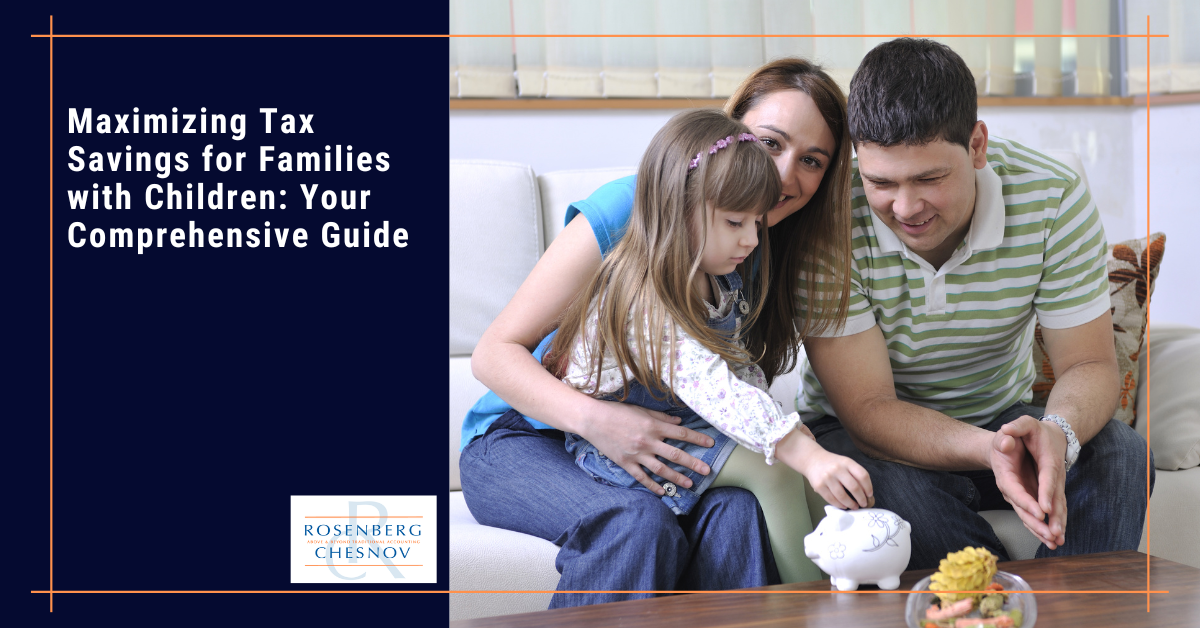Deductions and exemptions: What do families with children need to know?
Tax deductions and exemptions are one of the most critical money-saving tools for any taxpayer. For families with children, tax savings can be especially beneficial and can go towards expenses related to raising children, such as childcare or education.
The IRS offers a variety of tax deductions and credits specifically for families with children. Recent years have also brought many significant changes to the tax code that may impact you.
For example, 2017’s Tax Cuts and Jobs Act (TCJA) changed how some deductions and credits work for families, such as removing personal exemptions. This means that each qualifying household member can no longer claim personal exemptions, adding to a total reduction of taxable income. However, other changes introduced by the TCJA may partially or entirely offset this reduction, depending on your circumstances.
One such change is the raising of standard deduction amounts. For some families, these higher standard deductions offset the loss of personal exemptions, at least partially.
As a final example, the TCJA also increased the Child Tax Credit for the tax year 2022. The new credit can be as high as $2,000 per qualifying child age sixteen or younger, an increase over the old $1,000 limit. Additionally, if you do not owe any tax, up to $1,400 of the new child tax credit may be refundable via the Additional Child Tax Credit.
What deductions do you get for children?
Pandemic stimulus programs have also impacted tax considerations for some families with children this year. For example, the American Rescue Plan Act of 2021 raised the maximum Child Tax Credit in 2021 to $3,600 for qualifying children under six and $3,000 per child aged six through seventeen who qualified. The act also lowered income limits and made the entire credit refundable for 2021.
For the 2022 tax year, the expanded Child Tax Credit began phasing out for certain recipients, meaning some qualifying families stopped receiving advanced credit payments. Those taxpayers can get the credit when they file their returns in 2023.
Additionally, the increased maximums, the decreased minimums, and the pandemic-era refund eligibility qualifications will revert to their pre-pandemic thresholds — so make sure you are aware of the most up-to-date amounts and limitations that apply to your family.
Who is eligible for the Child Tax Credit in 2022?
The maximum credit in the 2022 tax year is $2,000 per qualifying child. Meanwhile, the maximum refundable credit is $1,500 per child who qualifies.
The phaseout of the expanded credit is determined relative to adjusted gross income (AGI). That means the $2,000 credit is reduced by $50 for each $1,000 of modified AGI above the following thresholds by filing status:
- $400,000 Married Filing Jointly.
- $200,000 Single, Head of Household, Qualifying Widow(er), or Married Filing Separately.
For other types of qualifying dependents other than a child, the maximum allowable credit is $500 in 2022.
How much can I deduct for child and dependent care expenses?
The Child and Dependent Care Credit allows qualifying families to reduce their taxes by 20-35% of the smallest of the following:
- $3,000 for one qualifying child or
- Up to $6,000 for two or more qualifying children.
You could claim this credit if you paid expenses for the care of a qualifying individual to enable you (and your spouse, if filing jointly) to work or actively look for work.
To be eligible for the credit, the family must have paid for childcare expenses, and the dependent child must have been under thirteen when the care was provided.
Other dependent individuals may also qualify for this credit, such as a spouse or someone who was physically or mentally incapable of self-care and lived with you for more than half the year. You may have options if you are a noncustodial parent claiming a child as a dependent. Still, you should review the rules under the topic “Child of divorced or separated parents or parents living apart” in Publication 503.
If an individual qualified for only part of the tax year, only those expenses paid for the care of the individual during that part of the year might be included in calculating the credit.
Who is not eligible for the Child and Dependent Care Credit?
Some child and dependent care expenses do not qualify for the tax credit, while others do. Take a look at the table below for some examples.
Child and Dependent Care Expenses
| Qualified | Not Qualified |
|
|
Additionally, instead of taking the credit, you may be eligible to exclude from income an amount of up to $5,000 for dependent care benefits received under an employer plan.
What other tax credits may apply for families with children?
Families with children should be aware of two more tax credits. Depending on your circumstances, they may be valuable tools for helping to maximize your tax savings.
First, let’s discuss the Earned Income Credit (EIC).
The EIC is a refundable credit for low-income earners. To take advantage of this credit, you must meet specific requirements regardless of whether you have qualifying children.
For example, you, your qualifying children, and your spouse (if filing jointly) must all have valid Social Security numbers. (One upsetting exception: a child who was born and died during the year.)
Additionally, you must be a U.S. citizen or resident alien or be married to one for the entire year, and you may not be the qualifying child of another taxpayer. You also may not file a tax form relating to foreign-earned income, and your investment income must be less than $10,300 (indexed for inflation).
Next, we’ll take a look at the Adoption Credit
This credit, for families who adopt a child, includes a tax credit for qualified adoption expenses and an exclusion from income for employer-provided adoption assistance.
The credit is nonrefundable, which means it’s limited to your annual tax liability. However, any credit over your tax liability may be carried forward for up to five years.
In 2022, eligible taxpayers can claim an adoption credit of up to $14,890 and exclude up to the same amount of employer-provided benefits.
An important caveat: You can not use the same qualifying expenses for both the credit and exclusion — only for one or the other.
Limits also apply to the total spent over all years for each effort to adopt an eligible child. The IRS treats an attempt that leads to adoption and any unsuccessful attempt to adopt a different child as one effort.
Tax strategies for maximizing deductions
The best way to maximize your tax savings is to take full advantage of every option available. It’s essential to understand which credits and deductions apply to your situation, to plan ahead, and to understand how your income and other factors affect your taxes. This will help you determine which credits and deductions will be most beneficial for you.
Finally, keeping track of all your deductions and credits is essential. This will help you ensure you’re taking full advantage of every opportunity the IRS provides for your circumstances.
Would you like some help?
If you are a client and would like to book a consultation, call us at +1 (212) 382-3939 or contact us here to set up a time.
If you aren’t a client, why not? We can take care of your accounting, bookkeeping, tax, and CFO needs so that you don’t have to worry about any of them. Interested? Contact us here to set up a no-obligation consultation.
Stay informed
Interested in receiving updates in your mailbox? Check out our newsletter, full of information you can use. It comes out once every two weeks, and you can register for it below.





